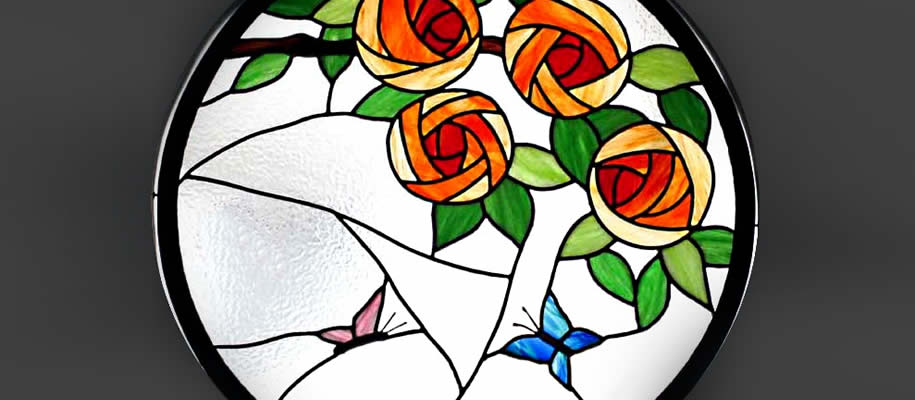
Variation of the traditional technique, the lead binding, this process was applied by L.C. Tiffany in the late 1800s to create lampshades, decorative objects and the very well known windows. The individual pieces of glass are edged in copper and tin soldering stopped by allowing you to work on curved surfaces. Tiffany through constant experimentation with new techniques reached its peak in the invention of a new type of glass called “Favrile“, which was produced in its furnaces.
It was an iridescent glass, which had an infinite range of shades through which you could get some realistic effects never experienced before except through painting. Nowadays the tiffany technique is considered more suitable for making lamps or small stained glass. It is also good to keep in mind that the windows and the objects that are bound to lead or tiffany have a greater resistance than a monolithic glass artifact because of their elasticity, and it is greater when the stained-glass window or lamp is made with numerous pieces of glass.
















